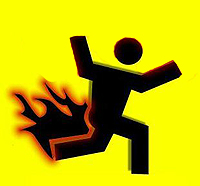Post
by ranger » August 5th, 2011, 5:07 am
As the numbers have been working out, I think that the relevance of rowing at 10 MPS OTErg for veteran lightweights is entirely accidental and in the end just a flattering mistake.
Rowing at 10 MPS OTW in a 1x is something else entirely.
OTW times are about fifteen seconds per 500m slower at the same rate.
The relevance of rowing at 10 MPS OTErg for veteran lightweights is that veteran lightweights, especially older veterans (55s, 60s, etc.) are about fifteen seconds per 500m slower than younger rowers.
So, rowing at 10 MPS OTErg is "good" rowing for them, if you define "good" relative to what old men can usually do, and therefore have usually done, historically.
The mistake in embracing this accidental merger of unrelated numbers, I think, is that there is really no necessary decline whatsoever in the skeletal-muscular capabilities of older men.
If older men keep up their skeletal-muscular fitness they can still row well at 50, 60, or even 70--hey, perhaps even 80.
Sure, older men slowly lose their aerobic capacity, but that is another issue entirely and one that also depends heavily on what is done to maintain it or squander it.
If you keep your fitness at a near maximal level, losses in aerobic capacity, I think, only account for _half_ of the observed second a year over 2K decline among veteran rowers.
The rest of the decline is skeletal-muscular, and therefore, unnecessary.
For whatever reason, veteran rowers tend to give up on their technique, or for many, never learn to row well at low drag in first place.
If he had rowed well at low drag, I think people like Andy Ripley could have pulled 5:50 at 50, right around four seconds per 500m better than he ended up doing (6:07).
Ripley just jammed the drag to max and hauled anchor with all of his levers simultaneously, both beginning and ending his stroke with the swing of his back, just as I did in 2002-2003.
Against maximal resistance, this works pretty well, as far as it goes.
As a technique, it isn't nearly as good as rowing well at low drag, though.
A good rowing stroke is precisely timed and sequenced and relies on length and speed rather than brute strength.
It isn't like weight-lifting.
It's like a whiplash.
ranger
Rich Cureton M 72 5'11" 165 lbs. 2K pbs: 6:27.5 (hwt), 6:28 (lwt)
